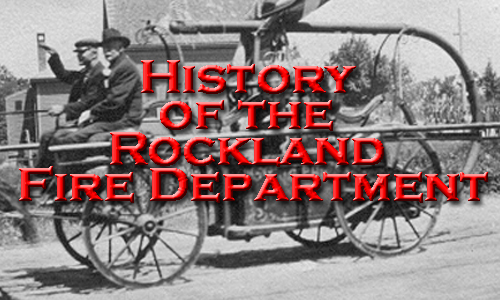|
King Philip Hand Fire Engine
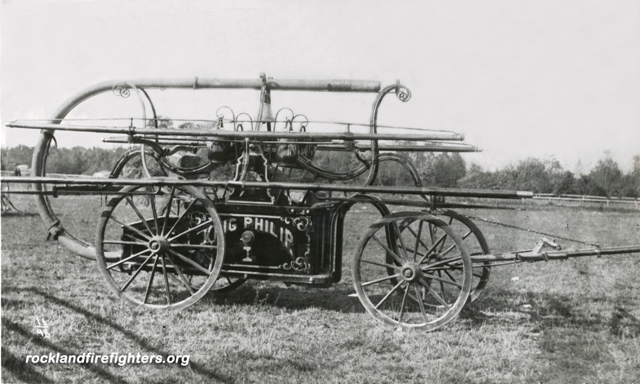
The King Philip hand fire engine (#701) was built in 1869 by the Hunneman Fire Engine Company of Boston, MA. It was a first class size, with 2 opposing pistons in the middle. The large “kettle” in the middle was an air damper. It gave it the ability to pressurize the water being pumped out. The discharge outlets are on the sides with the intake being from the rear. The total cost was $1800.00 and was delivered on February 10th, 1869.
It was originally pulled by hand and a horse drawbar was fitted for it after a short time. The RFD never owned their own horses but relied on 1 or 2 livery stables up town. It’s said that a few horses were so conditioned that when the bell went off at the station, the stable owner simply opened the stalls, and the horses would run up to the engine house on their own.
Once at the fire, the long wooden poles or “brakes” would be separated (at the sides) and swung 90 degrees to meet up with the brakes from the other side to form front and back brakes. The front wheels would be turned 90 degrees to make clearance for the front brakes (hence the curve in the iron pump handle).
The company captain would form men along the brakes, on both sides of each brake, and order the men to pump in rhythm. The faster you pumped, the better the stream out of the nozzle.
Back in the days of the King Philip there were no hydrants. Water had to be taken from cisterns (large underground storage pools built by the town) or draft from a pond or river with the “squirrel tail” suction hose on top of the rig. If you couldn’t get close enough, you had to fill the tub of the engine by hand (a bucket brigade).
The company of men assigned to the King Philip engine numbered around 50. A Foreman or Captain would be in charge and under him would be 2 assistants or Lieutenants. There was also a secretary and treasurer for administration purposes. The members were from all walks of life. When a call came in the members would respond to the fire from all types of businesses; grocers, hardware stores, shoe factories to name a few.
In 1884 the Rockland-Abington Joint Water Works went on-line providing a reliable source of water to the Town. The Fire Engineers (before the one Chief system) felt they no longer needed a large company of men. They would rely on hose wagons and hydrant pressure for their fire streams. They disbanded the King Philip Hand Engine Co. and reorganized them as the King Philip Hose Company #1. The strength of the new group was half that of the old company.
This proved to be disastrous. On July 16th, 1890, the worst fire to strike the Town (To Date) occurred, starting at the Congregational Church. Painters burning the paint off of the sides started the church burning. A long drought that summer had lowered the water level in the standpipes on Beech Hill so much that the hydrants were unable to supply a stream adequate to stop the fire. The King Philip, now in reserve at the engine house, was brought to the scene but by then it was too late. The fire burned 14 buildings including the church, the Town Hall, Dr. Underwood’s residence (where the South Costal Bank now stands), a factory and several houses. It was obvious that the Town needed the King Philip Hand Engine.
Sometime after the fire, the Town purchased a hose reel to assist the King Philip. This way it could not only provide its own water supply but also give the Town a better response.
The King Philip was finally decommissioned with the advent of the motorized apparatus. However, even though it spent time in and out of storage, it enjoyed a colorful career competing in various musters and pumping competitions. Its best stream ever was at the Weymouth Fairgrounds Muster… a prize winning 227+ feet.
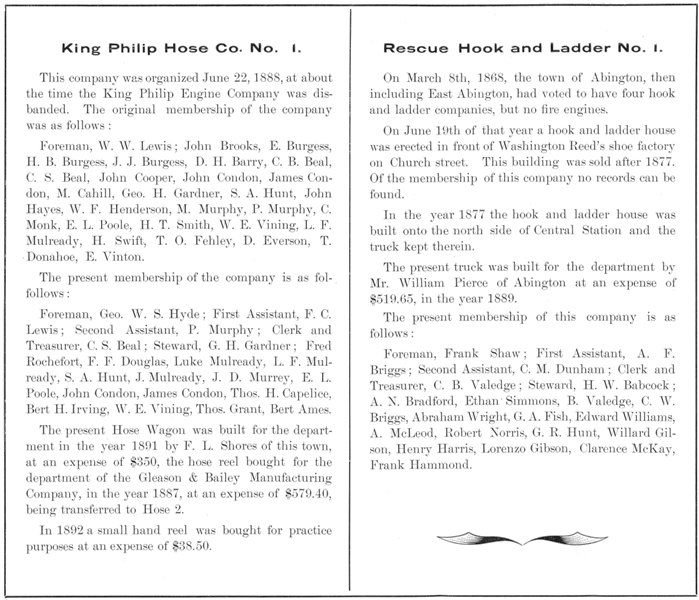
The King Philip was on display at the NFPA (National Fire Protection Association) in Quincy, MA. until May of 2015 when she returned home to Rockland Fire.
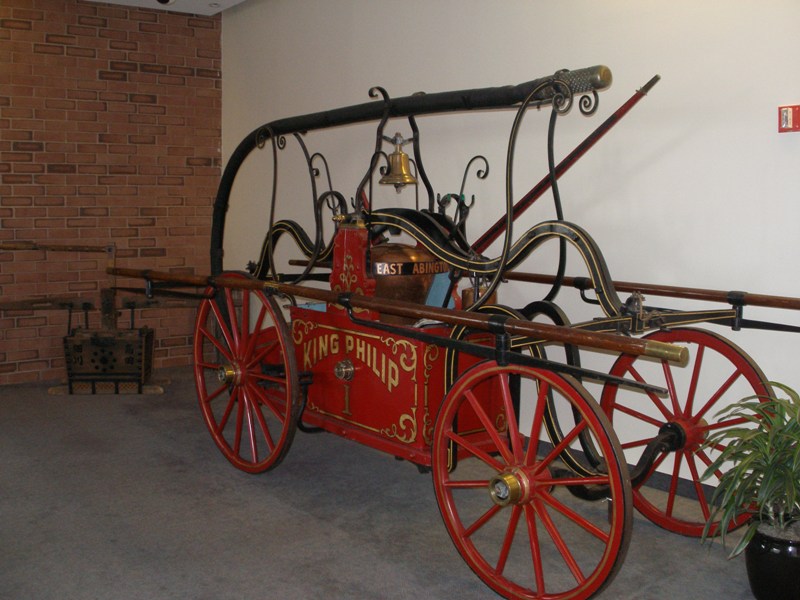 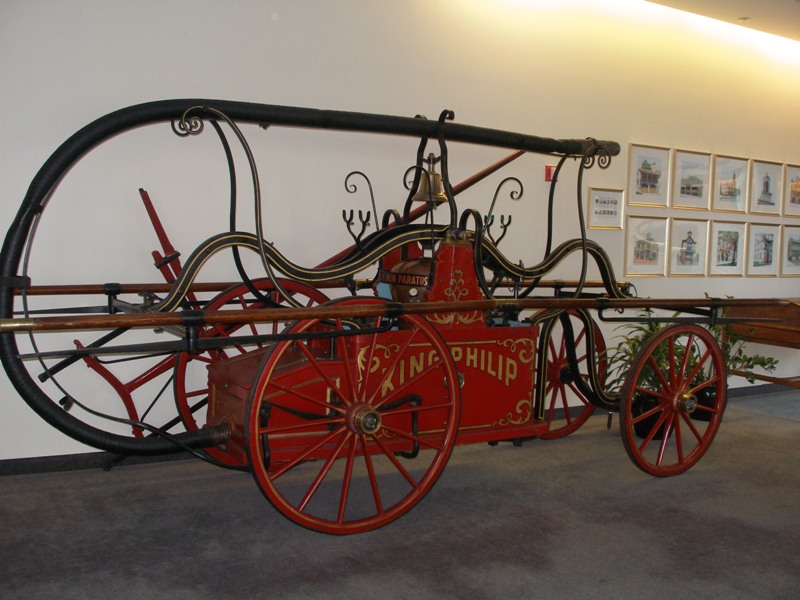
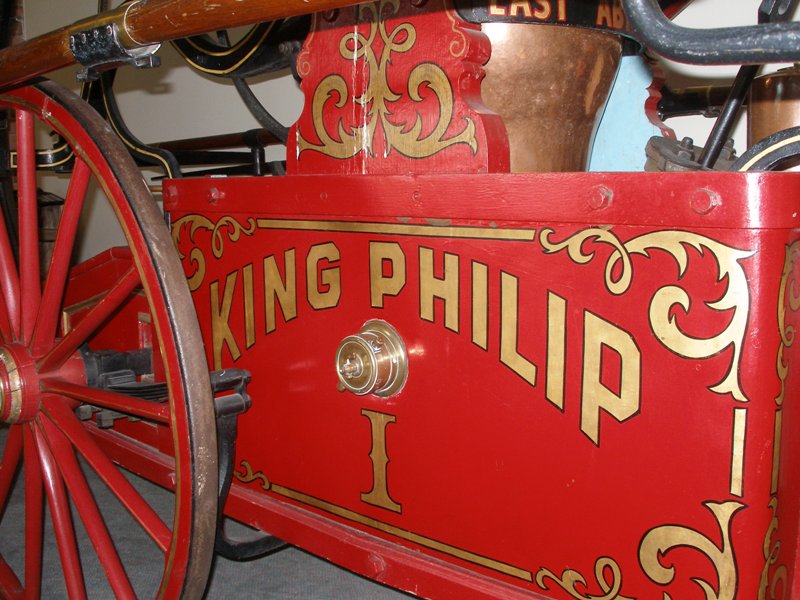
|
